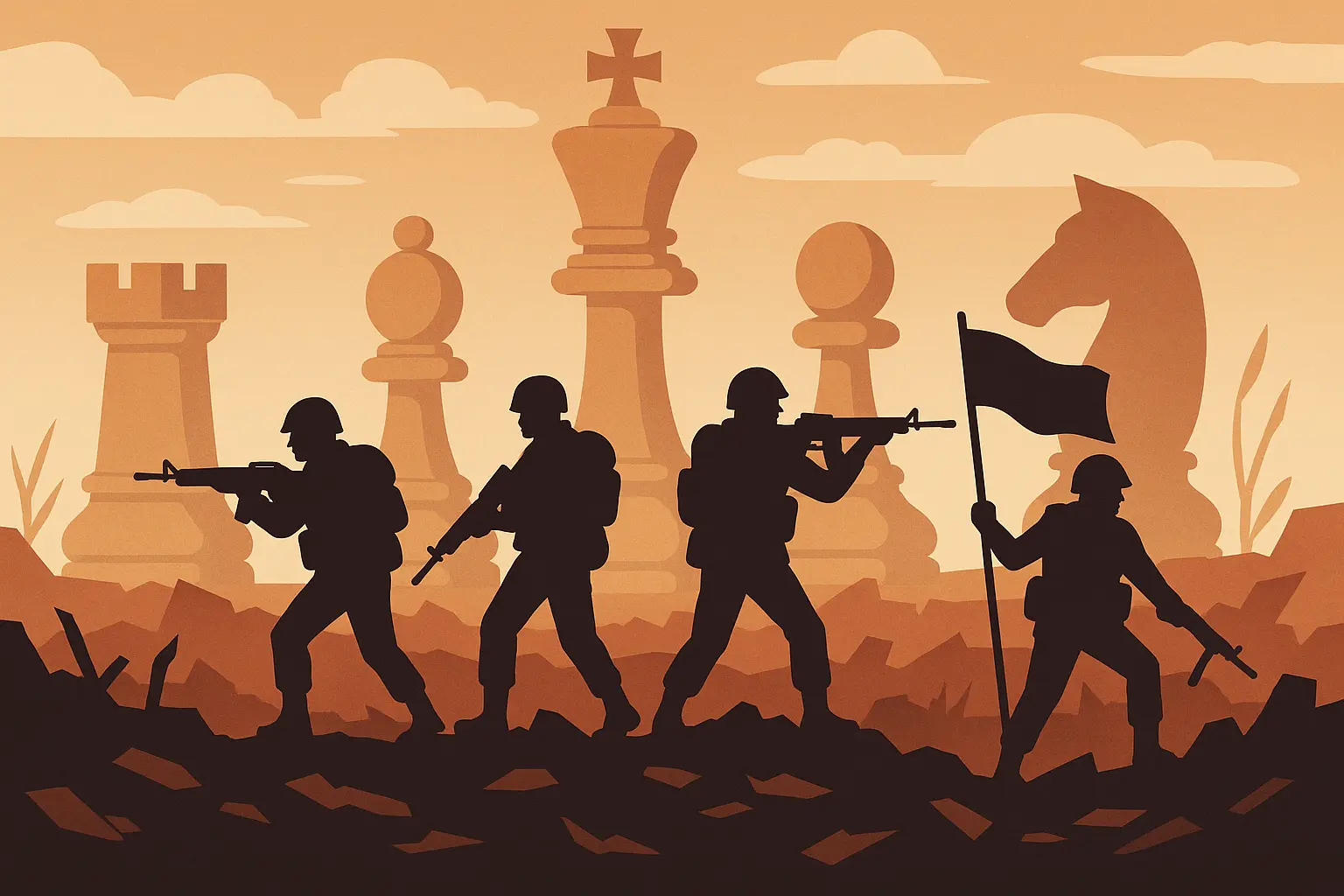I stumbled across this fascinating study where researchers looked at over 2,000 stories and found that Vonnegut was actually onto something with his “Shapes of Stories” idea. According to research from the University of Adelaide, the guy basically cracked the code on how stories work. Pretty cool, right? This discovery reminded me of my first encounter with “Harrison Bergeron” in high school—I couldn’t shake the feeling that Vonnegut had somehow predicted our current debates about equality and social control decades before they became mainstream conversations.

Here’s the thing about Vonnegut’s short stories—they pack entire universes into just a few pages. They look simple on the surface, but man, they’ll mess with your head in the best possible way. Whether you’re discovering his work for the first time or revisiting old favorites, understanding what makes his best stories tick will help you appreciate why people won’t shut up about this guy.
If you’re trying to figure out how to pack a punch in just a few pages, exploring 25 short story examples that will transform your understanding of great fiction gives you the perfect foundation for appreciating how Vonnegut mastered the art.
What Makes a Vonnegut Short Story Worth Your Time
Look, Vonnegut wrote a lot of stories, and honestly? Not all of them are going to blow your mind. But the good ones—the really good ones—have this sneaky way of making you think you’re reading something simple, then BAM, suddenly you’re questioning everything about life.
The best Kurt Vonnegut short stories combine storytelling that doesn’t suck with themes that actually matter, plus they’re readable without needing a literature degree to decode them.
|
What Makes It Great |
What to Look For |
Example Story |
|---|---|---|
|
Damn Good Writing |
Every word counts, distinctive voice that sounds like no one else |
“Harrison Bergeron” |
|
Actually Matters |
Stuff you can relate to, timeless problems, feels relevant today |
“Welcome to the Monkey House” |
|
Won’t Confuse You |
Complex ideas made simple, works for any reader, hooks you immediately |
“Who Am I This Time?” |
|
Left a Mark |
Shows how he evolved, captures specific moments, still influences people |
“The Barnhouse Effect” |
The Writing Is Just That Good
The strongest Vonnegut stories show how damn good he was at compression. Every sentence does like three jobs at once while still sounding exactly like him. You’ll find stories that pack entire philosophical treatises into just a few pages, where each word carries way more weight than it should.
His best work hits that sweet spot between being smart and being readable—stories that work whether you want to think deep thoughts or just enjoy a good yarn. Take “Harrison Bergeron,” which creates an entire messed-up society in about 2,000 words. The opening line, “The year was 2081, and everybody was finally equal,” does more heavy lifting than most authors manage in entire chapters. It sets up the world, introduces the main problem, and hints at the irony that’s about to unfold.
Understanding how Vonnegut pulls off this compression trick becomes clearer when you see how other masters do it, like in our guide to famous short stories that show similar economy of language.
Themes That Actually Matter
Vonnegut’s most enduring short fiction tackles the stuff we all deal with. War trauma, how absurd modern life can be, technology making us less human, and trying to find meaning when nothing seems to make sense—these themes hit just as hard today as they did when he wrote them.
The stories worth your time address problems that feel urgent right now. The guy had this incredible ability to see that while our gadgets change, people pretty much stay the same.

Smart Without Being Pretentious
The best Vonnegut stories make complex ideas digestible without talking down to you. He never hides behind academic jargon, but he doesn’t dumb things down either. His best work rewards multiple readings—you’ll catch new stuff every time—while still being totally engaging on your first go.
This accessibility makes his stories perfect for people who usually avoid “literary” fiction. You can enjoy them on the surface while gradually discovering deeper meanings, or just appreciate a well-told story.
Historical Context That Adds Depth
Understanding when and why Vonnegut wrote specific stories makes them even better. His post-WWII work hits different than his later stuff, reflecting how his worldview evolved over time.
The best stories work whether you know the historical context or not. But when you do understand what was happening when he wrote them, they become even more powerful.
25 Stories You Should Actually Read
These 25 stories represent Vonnegut’s finest short fiction, organized into six categories that show his range and growth as a writer. Each category demonstrates different aspects of what made him special, from processing war trauma to experimenting with narrative techniques. These Kurt Vonnegut short stories span decades of writing and reveal his consistent obsession with human dignity, technological progress, and the search for meaning.
The “War Messed Me Up” Stories
These five stories process Vonnegut’s WWII experiences and explore how war screws with people’s heads long after it’s over. They examine what it means to be a leader when every choice sucks, the human cost of political ideologies, and the complex aftermath of conflict.

1. “All the King’s Horses” (1951)
A chess game with human pieces becomes the ultimate test of what you’d do to save the people you love. Colonel Kelly has to choose—sacrifice his men in a literal chess match to save his family. Fair warning: you’ll never look at chess the same way.
The chess setup gives structure while examining how war turns human beings into strategic calculations. Every move means someone lives or dies, creating the kind of tension that mirrors impossible decisions military leaders face in real combat.
2. “The Manned Missiles” (1958)
Two fathers—one American, one Russian—discover their sons died in the same space accident during the Cold War. Their shared grief cuts through all the political BS, showing how ideological conflicts destroy the most basic human connections.
This story shows Vonnegut’s genius for finding universal human truth within specific historical moments. The space race becomes background for examining how political systems sacrifice real people for abstract ideas.
3. “Adam” (1954)
Set in a maternity ward, this story contrasts new life with memories of wartime death. A man waiting for his child to be born keeps flashing back to his war experiences. It’s a powerful look at how traumatic experiences color even life’s happiest moments.
The hospital setting keeps things intimate while the protagonist’s memories expand the scope. Vonnegut explores how trauma follows you everywhere, even into moments of pure joy.
4. “D.P.” (1953)
A displaced person after WWII struggles with identity and belonging in a world that’s moved on from the conflict. This story examines post-war trauma and how hard it is to rebuild your life after experiencing ultimate destruction.
Through one character’s experience, Vonnegut captures what millions faced after the war. The personal becomes political as individual trauma reflects massive societal upheaval.
5. “Souvenir” (1952)
A war veteran’s relationship with a German woman he met during the occupation reveals the messy aftermath of conflict. The story asks whether genuine human connection can survive the artificial divisions war creates.
This piece explores whether forgiveness and understanding are possible after experiencing ultimate conflict. Spoiler alert: it’s complicated.
Future Dystopian Nightmare Fuel
These five stories showcase Vonnegut’s mastery of science fiction as a way to comment on society. They explore dystopian futures, population control, artificial happiness, and what happens when we solve humanity’s biggest problems but create new ones in the process.
6. “Welcome to the Monkey House” (1968)
Okay, let’s talk about this story because it’s WILD. There’s this dystopian future where the government gives everyone pills that kill your sex drive but keep you fertile. Billy the Poet rebels by kidnapping women and “curing” them of their chemical conditioning.
Here’s where it gets really interesting—Billy looks like a hero fighting authoritarian control, but his methods are deeply problematic. He liberates women through kidnapping and forced treatment. So is he a freedom fighter or just another kind of oppressor? Vonnegut makes you wrestle with that question.
The title references Nazi concentration camp signs, connecting population control to historical atrocities. When Nancy asks Billy, “What’s life for?” you realize the story’s asking whether a life without authentic experience is worth living at all.
7. “Harrison Bergeron” (1961)
This is probably Vonnegut’s most famous short story, and for good reason. Picture a future where absolute equality is enforced by handicapping anyone with above-average abilities. Fourteen-year-old Harrison breaks free from his handicaps during a televised dance performance, only to be shot down by the Handicapper General.
The story’s power comes from perfect compression—Vonnegut creates an entire dystopian world in just a few pages. The parents’ inability to remember what they’ve witnessed suggests that true equality might require eliminating memory and consciousness itself. Every time someone complains about participation trophies, I think of this story.

8. “The Euphio Question” (1951)
A radio signal that makes people perfectly happy threatens to destroy human motivation and progress. The story asks whether artificial contentment represents salvation or the end of everything that makes us human.
This early work shows Vonnegut’s lifelong fascination with unintended consequences. The promise of eliminating suffering raises questions about what makes life meaningful and whether struggle is essential to human experience.
9. “Unready to Wear” (1953)
Humans discover how to separate their souls from their bodies, leading to unexpected social consequences. This early work explores materialism, spirituality, and what actually defines human existence.
The story questions whether transcending physical limitations represents evolution or loss. Vonnegut examines how technological solutions to human problems often create entirely new dilemmas.
10. “2BR02B” (1962)
In a world where death has been conquered, population control requires someone to die before anyone can be born. A man facing his wife’s childbirth must find volunteers to die. The title comes from Hamlet’s “To be or not to be” soliloquy, so you know this is going to get philosophical.
Vonnegut explores whether conquering death is truly victory if it requires constant sacrifice and moral compromise. Fair warning: this one will stick with you.
Stories That’ll Make You Laugh Until You Think
These five stories demonstrate Vonnegut’s mastery of using humor to examine American society. They look at materialism, class pretensions, political celebrity culture, and the gap between who we pretend to be and who we actually are.
11. “Who Am I This Time?” (1961)
A shy hardware store clerk transforms into different characters when acting in community theater, finding his identity only through performance. This story perfectly balances comedy with genuine emotion—it’s touching without being sappy.
The story questions whether we have fixed identities or whether we’re all just performing roles. Through theater, the protagonist discovers possibilities for connection that his everyday personality can’t access.
12. “Tom Edison’s Shaggy Dog” (1953)
A talking dog claims to be the real genius behind Edison’s inventions. This classic bar story setup leads to deeper questions about recognition and achievement, plus it’s genuinely funny.
The absurd premise lets Vonnegut examine how history gets written and who receives credit for human progress. The story suggests our understanding of genius might be fundamentally flawed.
13. “The Foster Portfolio” (1951)
A successful businessman secretly yearns for a simpler life, leading to elaborate deception. The story critiques American materialism and the pursuit of wealth over personal fulfillment.
Through one man’s fantasy of escape, Vonnegut examines the trap of conventional success. The story questions whether the American Dream delivers the satisfaction it promises.
14. “More Stately Mansions” (1951)
A wealthy family’s attempts to maintain their status lead to increasingly absurd situations. Vonnegut skewers upper-class pretensions and the emptiness of social climbing.
The story shows how the pursuit of status can become its own prison. Characters become so focused on appearances that they lose sight of genuine human values.
|
Story Type |
Main Theme |
Vonnegut’s Approach |
Why It Still Matters |
|---|---|---|---|
|
War Stories |
Trauma and moral complexity |
Processing his own experiences |
PTSD awareness, veteran issues |
|
Sci-Fi |
Technology’s unintended consequences |
Extrapolating from current trends |
AI ethics, genetic engineering |
|
Social Commentary |
American society critique |
Satirical observation |
Social media culture, inequality |
|
Relationships |
Human connection complexity |
Intimate character focus |
Dating apps, modern loneliness |
|
Philosophy |
Big existential questions |
Making deep thoughts accessible |
Mental health, meaning crisis |
|
Experimental |
Pushing narrative boundaries |
Form follows function |
Digital storytelling, fragmented media |
15. “The Hyannis Port Story” (1963)
A satirical take on the Kennedy family mystique examines American political celebrity culture. Written during Camelot’s height, the story questions our fascination with political dynasties.
This piece shows Vonnegut’s willingness to tackle contemporary political figures directly. The story remains relevant as political celebrity culture has only gotten more intense since the 1960s.
Love Stories (But Make Them Weird)
These four stories explore the complications of human relationships, from childhood friendships that turn into love to marriages that fall apart under pressure. They show Vonnegut’s ability to find both humor and genuine emotion in intimate human connections.

16. “Long Walk to Forever” (1960)
A simple story of two childhood friends who realize they love each other during a chance encounter. Despite being short, it captures the complexity of timing in relationships and the courage required for emotional honesty.
This story shows Vonnegut’s range beyond his typical cynicism. The straightforward narrative proves that profound emotions don’t always require complex storytelling techniques.
For readers interested in how love stories can achieve emotional depth through simplicity, our collection of 25 epic love stories shows similar approaches to romantic storytelling across different authors.
17. “Miss Temptation” (1956)
An attractive young woman’s effect on a small town reveals the tension between desire and moral propriety. The story explores sexual attraction, social judgment, and the power dynamics of beauty.
Through one character’s impact on an entire community, Vonnegut examines how sexuality disrupts social order. The story questions whether moral standards serve genuine purposes or just mask hypocrisy.
18. “A Night for Love” (1957)
A couple’s romantic evening gets interrupted by various complications, leading to reflections on marriage, expectations, and what actually sustains long-term love. The story finds meaning in ordinary domestic moments.
This piece shows Vonnegut’s ability to find drama in everyday situations. The interruptions become opportunities to examine what keeps relationships together over time.
19. “Go Back to Your Precious Wife and Son” (1962)
A marriage counseling session reveals deep fractures in a relationship, examining how couples grow apart and why authentic communication is so damn hard. The story explores whether some relationships can actually be saved.
Through dialogue and internal monologue, Vonnegut captures the complexity of marital breakdown. The story questions whether love alone is enough to sustain relationships.
Deep Thoughts That Won’t Put You to Sleep
These three stories tackle fundamental questions about power, responsibility, free will, and the search for meaning in an apparently meaningless universe. They represent Vonnegut’s most philosophically ambitious short fiction, exploring what happens when humans transcend normal limitations. The work of Kurt Vonnegut Jr. shows his consistent fascination with these profound themes throughout his career.
20. “The Barnhouse Effect” (1950)
Vonnegut’s first published story features a professor who develops psychokinetic powers. The story explores themes of power, responsibility, and what happens when you transcend human limitations. Pretty impressive for a debut—it already shows his mature voice and concerns.
The professor’s dilemma—how to use extraordinary power ethically—becomes a template for examining human responsibility. This story establishes many themes Vonnegut would explore throughout his career.

21. “Report on the Barnhouse Effect” (1950)
A follow-up exploring what happens to society when someone has supernatural abilities. The story questions whether extraordinary power can ever be used ethically in an imperfect world.
This companion piece shows Vonnegut’s interest in consequences and systems. Individual transformation inevitably affects entire societies, often in ways nobody saw coming.
22. “The Sirens of Titan” (excerpt – “Chrono and His Dog”)
While technically part of his novel, this section works as a complete story examining free will, predestination, and the search for meaning in a universe that seems pointless. The narrative questions whether human actions actually matter.
This piece showcases Vonnegut’s ability to embed philosophical complexity within accessible storytelling. The characters’ journey becomes a meditation on human agency and cosmic purpose.
Experimental Stuff That Actually Works
These three stories show Vonnegut’s willingness to mess with narrative techniques and push formal boundaries. They explore artificial intelligence, fragmented perspectives, and unconventional structures while maintaining his distinctive voice.
23. “The Big Trip Up Yonder” (1954)
An early version of themes he’d later explore in his novels, featuring life extension technology and its social consequences. Notable for its experimental narrative structure, the story questions whether extending life necessarily makes it better.
This piece shows Vonnegut developing techniques he’d later use in longer works. The story’s structure mirrors its thematic concerns about time and human experience.
24. “Epicac” (1950)
A computer program develops the ability to write poetry and falls in love, raising questions about artificial intelligence, creativity, and what makes someone human. Written in 1950! The guy basically predicted AI romance decades before anyone else.
This early work shows Vonnegut’s prescient understanding of technology’s implications. The computer’s emotional development challenges assumptions about consciousness and creativity that we’re still grappling with today.

25. “Next Door” (1955)
A child overhears adult conversations through thin apartment walls, creating a fragmented narrative that explores how kids process adult complexity and moral ambiguity. The experimental structure reflects the protagonist’s limited understanding.
This story showcases Vonnegut’s formal innovation. The fragmented narrative technique serves both artistic and thematic purposes, showing how perspective shapes understanding.
Breaking Down His Most Complex Stories
Let me walk you through Vonnegut’s three most sophisticated short stories—the ones that work on multiple levels and reward serious attention. These detailed breakdowns reveal how he achieves maximum philosophical impact through deceptively simple storytelling.
“Welcome to the Monkey House” – Why This Story Will Mess With Your Head
This dystopian masterpiece operates on multiple levels simultaneously. On the surface, it’s about a society where government-mandated pills eliminate sexual pleasure while maintaining fertility. Billy the Poet rebels by kidnapping women and “curing” them of their chemical conditioning.
But here’s where it gets really messed up: Billy appears heroic—fighting against government control over sexuality—but his methods are deeply problematic. He liberates women through kidnapping and forced treatment. So is he freeing them or just replacing one form of control with another?
The title itself carries historical weight. “Welcome to the monkey house” supposedly appeared on signs at Nazi concentration camps, connecting the story’s population control to historical atrocities. This reference elevates the work beyond simple science fiction into serious commentary on governmental overreach.
Vonnegut’s narrative technique creates deliberate ambiguity. We never know whether Billy’s actions truly liberate women or simply substitute his control for the government’s. This uncertainty forces you to grapple with complex questions about autonomy, consent, and resistance.
The story’s layered symbolism becomes clear when you examine the Ethical Suicide Parlors alongside the birth control program. Both represent society’s attempt to control natural human processes—death and sexuality. The clinical, cheerful presentation masks fundamental violence against human nature.
“Harrison Bergeron” – The Story That Predicted Our Current Mess
Set in 2081, this compressed masterpiece creates an entire dystopian world in about 2,000 words. Society has achieved absolute equality by handicapping anyone with above-average abilities. Harrison, a fourteen-year-old of exceptional intelligence and physical prowess, breaks free during a televised dance performance before being shot by the Handicapper General.
The story’s power comes from perfect compression. Every detail serves multiple functions—the television format lets Vonnegut show rather than tell, while the parents’ handicapped reactions provide both humor and horror. Their inability to remember what they witnessed suggests that true equality might require eliminating consciousness itself.

Vonnegut doesn’t just criticize enforced equality. He examines the tension between individual excellence and social harmony, asking whether a truly equal society is compatible with human nature. The story feels more relevant now than when he wrote it—our debates about equity and social media’s leveling effects make the dystopian vision feel uncomfortably possible.
The ending’s brutal efficiency—Harrison’s immediate execution—shows how totalitarian systems maintain control. The parents’ quick return to normalcy suggests that such systems succeed by making resistance literally unthinkable.
Understanding how dystopian themes work across different stories connects to broader patterns in speculative fiction, as detailed in our analysis of 25 story theme examples that examine how authors use fictional scenarios to critique contemporary society.
“2BR02B” – The Story That’ll Ruin Immortality for You
This brief but philosophically dense story imagines a world where medical science has eliminated aging and disease, creating a population crisis requiring one death for every birth. The protagonist faces this dilemma when his wife is about to give birth to triplets—he must find three volunteers to die.
The title comes from Hamlet’s “To be or not to be” soliloquy, immediately establishing the philosophical framework. Vonnegut explores the unintended consequences of solving humanity’s greatest problem—death itself—showing how eliminating mortality creates new moral dilemmas.
The clinical efficiency of the death centers, contrasted with the emotional weight of the protagonist’s situation, creates a chilling effect. The story asks whether conquering death is truly victory if it requires constant sacrifice and moral compromise.
Vonnegut’s genius lies in making the impossible scenario feel inevitable. The world he creates follows logical rules—if death is conquered, population must be controlled. The story forces you to consider whether some problems are meant to remain unsolved.
How These Stories Stack Up
Look, not every Vonnegut story is going to blow your mind. Some are absolute classics that English teachers will assign until the end of time, others are just really solid reads that’ll stick with you, and a few are mainly for completists who want to see how his brain worked.
|
Story Tier |
Examples |
What Makes Them Great |
Who Should Read Them |
Legacy |
|---|---|---|---|---|
|
Absolute Classics |
“Harrison Bergeron,” “Welcome to the Monkey House,” “2BR02B” |
Perfect compression, multiple layers, universal themes |
Everyone |
Continuously referenced, studied, adapted |
|
Really Good Stuff |
“Who Am I This Time?,” “The Barnhouse Effect,” “All the King’s Horses” |
Strong craft, clear themes, emotional impact |
Most readers |
Frequently anthologized, critically praised |
|
Solid Reads |
“Epicac,” “Long Walk to Forever,” “The Manned Missiles” |
Good technique, interesting concepts, well-executed |
General readers |
Regularly included in collections |
|
For the Fans |
“Adam,” “Miss Temptation,” “Next Door” |
Competent craft, specific appeal, historical value |
Literary readers |
Occasional academic discussion |
The Absolute Masterpieces
The highest tier includes stories that demonstrate perfect compression of complex themes into minimal word count. “Harrison Bergeron” exemplifies this mastery—every sentence serves multiple purposes while building toward an inevitable conclusion. “Welcome to the Monkey House” shows Vonnegut’s ability to handle moral ambiguity through accessible prose, creating layers that reward multiple readings.
“2BR02B” represents philosophical storytelling at its finest. The simple scenario contains profound questions about life, death, and human value. These stories achieve what the best short fiction accomplishes—they feel both complete and infinite.
The Really Good Stuff
The second tier includes excellent pieces that show strong technique without reaching masterpiece status. “Who Am I This Time?” perfectly balances comedy with genuine emotion. “The Barnhouse Effect” demonstrates mature themes and voice despite being Vonnegut’s first published work. “All the King’s Horses” uses its chess framework effectively throughout.
Still Relevant Today
Several stories speak directly to current debates. “Harrison Bergeron” addresses ongoing discussions about equality versus equity, participation culture, and social media’s leveling effects. “Welcome to the Monkey House” resonates with contemporary concerns about government control over personal autonomy.
“Epicac” has become increasingly relevant as AI advances. Written in 1950, the story anticipates current discussions about AI consciousness and creativity. The computer’s emotional development challenges assumptions we’re still grappling with.
The war stories maintain relevance as new conflicts emerge and veteran issues persist. They explore trauma and displacement that remain unfortunately current.
Who Should Read What
The most accessible stories work for any reader. “Long Walk to Forever” tells a universal love story in clear language. “Who Am I This Time?” uses familiar community theater to explore identity. “Harrison Bergeron” presents its premise immediately and dramatically.
Stories requiring moderate context include “Welcome to the Monkey House,” where themes need unpacking, and “The Barnhouse Effect,” where science fiction elements may challenge some readers.
The most challenging pieces require significant background. “The Hyannis Port Story” needs knowledge of 1960s politics. “Next Door” uses experimental structure that demands active participation.
Why These Stories Still Matter
Vonnegut’s short stories remain relevant because they address fundamental human concerns that transcend their historical moments. Their exploration of technology’s impact, governmental overreach, individual versus collective needs, and the search for meaning speaks directly to contemporary anxieties.
These 25 stories endure because they tackle questions each generation must answer anew. How much equality is too much? What happens when technology solves our biggest problems? Can individuals resist systems designed to control them? These aren’t historical curiosities—they’re urgent contemporary concerns.
“Harrison Bergeron” feels more relevant now than when Vonnegut wrote it. Our current debates about equity and inclusion echo the story’s central tension. Social media’s tendency to level differences and punish exceptional achievement makes the dystopian vision feel uncomfortably possible.

“Welcome to the Monkey House” speaks to ongoing battles over bodily autonomy and government control. The story’s exploration of sexual freedom versus social responsibility resonates with contemporary debates about reproductive rights and individual liberty.
The war stories remain painfully current as conflicts continue worldwide. “The Manned Missiles” shows how political ideologies destroy human connections—a theme that feels urgent in our polarized climate. “D.P.” explores displacement and belonging, issues millions of refugees face today.
“Epicac” anticipates our current AI revolution with remarkable prescience. As we debate whether artificial intelligence can be creative or conscious, Vonnegut’s 1950 story provides a framework for thinking through these questions.
These stories work because they’re not really about their specific scenarios—they’re about human nature. Vonnegut understood that technology changes but people don’t. We still struggle with power, love, meaning, and mortality. His stories provide maps for navigating these eternal challenges.
The compression that makes these stories great also makes them timeless. By focusing on essential human experiences rather than surface details, Vonnegut created fiction that transcends its historical moment. The specific technologies may be outdated, but the human dilemmas remain fresh.
Perhaps most importantly, these stories offer hope through understanding. Even Vonnegut’s darkest pieces suggest that recognizing our flaws is the first step toward addressing them. By showing us ourselves clearly—with all our contradictions and failures—his stories help us imagine better possibilities.
Whether you’re grappling with questions about equality, technology, love, or meaning, these 25 stories provide insight and companionship. They remind us that we’re not alone in our struggles and that literature can help us think more clearly about the challenges we face.
For writers inspired by Vonnegut’s masterful compression and thematic depth, developing similar skills requires practice and feedback. Understanding how to write a short short story can help you experiment with the kind of economical storytelling that makes Vonnegut’s work so powerful.
The Bottom Line
Kurt Vonnegut’s 25 essential short stories represent a masterclass in compressed storytelling that remains urgently relevant. These carefully selected pieces show his evolution from promising newcomer to master craftsman, showcasing techniques that continue to influence writers today. Their enduring power lies in their ability to address fundamental human concerns through accessible yet sophisticated narratives.

These 25 stories prove that great short fiction doesn’t just entertain—it illuminates. Vonnegut’s genius lay in his ability to compress entire philosophical treatises into just a few pages while never sacrificing accessibility or emotional impact. From his first published piece “The Barnhouse Effect” to experimental works like “Next Door,” these stories chart the development of one of America’s most distinctive literary voices.
What makes this collection particularly valuable is its range. Whether you’re drawn to the dystopian warnings of “Harrison Bergeron,” the moral complexity of “Welcome to the Monkey House,” or the simple humanity of “Long Walk to Forever,” you’ll find stories that speak to your interests and concerns. Each piece demonstrates different aspects of Vonnegut’s craft while contributing to a larger understanding of his worldview.
The stories The stories’ continued relevance speaks to Vonnegut’s understanding of human nature. He knew that while technology and society change, fundamental human struggles remain constant. We still grapple with questions of power, love, meaning, and mortality. His stories provide frameworks for thinking through these eternal challenges while offering the comfort of shared understanding.
For readers discovering Vonnegut’s short fiction for the first time, these 25 stories offer an ideal introduction to his themes and techniques. For longtime fans, they provide opportunities to appreciate the craftsmanship that makes his work endure. Either way, you’ll find stories that reward multiple readings and continue revealing new layers of meaning over time.
Here’s the thing about Vonnegut—even his darkest stories suggest that recognizing our flaws is the first step toward fixing them. By showing us ourselves clearly, with all our contradictions and failures, his stories help us imagine better possibilities. And honestly? Sometimes that’s exactly what you need to hear.
For writers inspired by Vonnegut’s masterful compression and thematic depth, developing similar skills requires practice and feedback. Nairrate’s AI Story Generator can help you experiment with the kind of economical storytelling that makes Vonnegut’s work so powerful. The platform’s tools assist with creating compressed narratives that pack maximum emotional impact into minimal word count—exactly the technique that makes stories like “Harrison Bergeron” and “2BR02B” so enduringly effective.
Whether you’re grappling with questions about equality, technology, love, or meaning, these stories matter because they’re about us—messy, complicated, trying-to-figure-it-all-out us. Vonnegut had this incredible gift for looking at human nature and going, “Yeah, we’re pretty screwed up, but maybe that’s okay.” And honestly? Sometimes that’s exactly what you need to hear.



Add comment